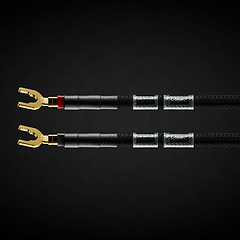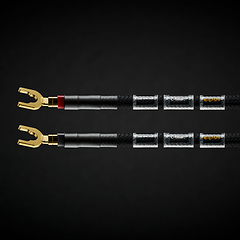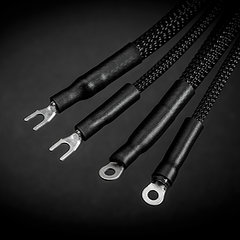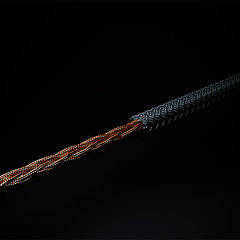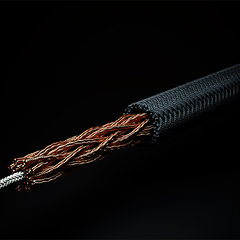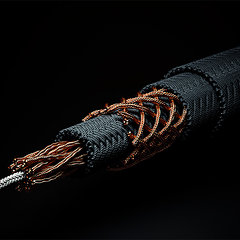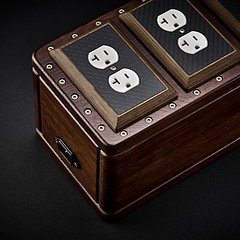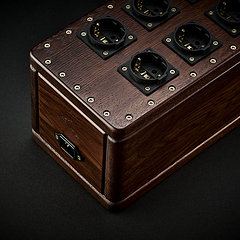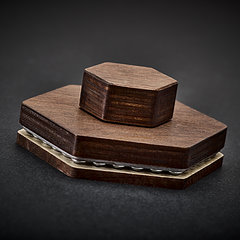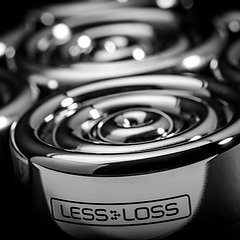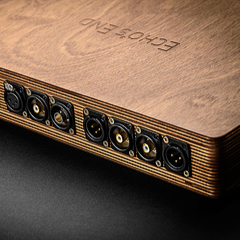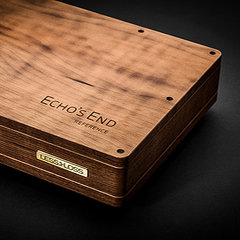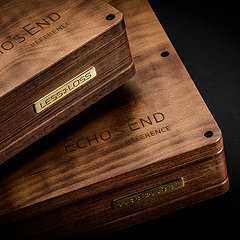Blackbody v.2A six chapter conjecture on the mental struggle of striving for the best noise floor
New concept!Now, 6 years later, we come back to all the seemingly contradictory, or at least misunderstood, aspects of the Blackbody's strangeness with regards to placement. The first thing we tackled was its angle of effectiveness. We did this through re-design. The original Blackbody was effective at about 35 degrees due to the narrow angle of mirror surfaces within. It was highly directional in this sense. When set up, the 35 degree angle was limiting. How do we get more angle of effectiveness without requiring multiple units? In real world applications, placement was often forced to be too close for best angle coverage. This meant the device was limited in its effectiveness given the small angle of effectiveness. We solved this by making this second version round. Now, EM energy entering at any angle or polarisation would be treated the same way. We could now also have an effective cone angle approaching 180 degrees from all sides. This was very effective. At least it would be easy for the user to simply set it down somewhere on the rack and be done with it. The idea was that the angle of effectiveness was now so large that it really wasn't crucial to aim it anymore. In this way we could release the product successfully as a “place-and-forget” device. It truly does outperform the original Blackbody even when placed willy-nilly on its back. Its smaller footprint is also much more user-friendly. Anybody will find room for this small disc even if it means just setting it down on the lid of some piece of gear. As it is not tall (18.5mm), often times it will even be possible to simply slide it under a piece of gear which rests on equipment feet. In this way we gained a lot of real world user flexibility in the new design. 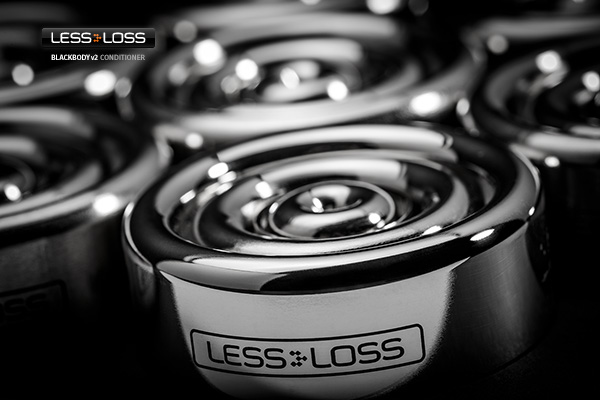
Being stripped down to the essentials with no additional frame or glass cover, the v.2 unit is fully exposed. Knowing it is conductive, and recalling our crystal glass grounding experiments, we tried grounding it. This gave an obvious positive effect. So we are including a grounding bolt at its side where you can connect a grounding wire and run that to some common ground in your system. We'll include ready made C-MARC grounding wire options with ring terminals attached which fit the Blackbody's grounding bolt perfectly. It will be possible to neatly chain the grounds of multiple Blackbodies in order to reduce the cable mess many of us endure already. 
Let's just try this one thing...Remembering the lingering unanswered questions from years before, being the inquisitive audiophiles that we are, we figured we'd try the once-proven angled position with this new v.2 Blackbody. After all, this one is different. This one contains no steel, and its magnetic permeability is just as low as air's, so this test will show us something at the very least. To our amazement, low and behold, the angle still revealed itself as being more effective, and by an obvious degree. Playing any track with the Blackbodies lying flat, then again being angled toward the North direction at normal the local flux angle of the magnetic field, instantly led to significantly better results. Undeniably and repeatedly so. Day/night/hour did not matter in the least. By carrying out this angle test with the new v.2 Blackbody, we learned for sure that it was definitely not the v.1 Blackbody's partial magnetic shielding effect which was at play here. That had nothing to do with it! The v.2 Blackbody contains no iron, no steel. Steel, which was creating a partial shielding of the magnetic field just by being there, was now eliminated as being influential in this effect of angled placement. Now we knew it had to be something else. That 'something else' must be revealedAt this point, much further experimentation was carried out with this phenomenon. We have developed a working theory as to why this angle is so effective. It is a theory which may serve not only to explain this phenomenon regarding the Blackbody's effectiveness at this angle; it may also explain many of the day-to-day sonic differences all of us audiophiles hear. I am not talking about things related to equipment and cables burning in, etc. These day-to-day fluctuations in sound quality seem to have no rhyme or reason. Even very well settled systems reveal these changes, and they are arguably even better at doing it. These fluctuations in quality seem to have no connection to day/night rhythm, and it must be acknowledged that all of us have experienced superb sound in the daytime as well as horrible sound during the night. These are those times that we realize “this is just not the level at which I know this system is capable of playing. Today is simply not the day.” The theory in as few words as possible: Solar WindAfter developing and experimenting exhaustively with the new Blackbody v.2, and after much contemplation, it is becoming increasingly evident that it is the Sun's activity which causes these day-to-day and even hour-to-hour fluctuations in sonic quality. Solar activity, as it turns out, has profound influence on the Earth. It isn't as far-fetched as it soundsEven though all I can do here is show as clearly as I can the mental paths which point us to this conclusion, true conviction will come only from direct experience. Just as it was unexpected that the experience when we changed the atmospheric constitution of the air surrounding the electronics in our experiments caused us to realize every particle's interaction with all signals is of audible significance, so, too, will it be difficult without having the Blackbody on location to realize the plausibility of our theory. 
Hot Hands as an almost free experiment There is, however, a very inexpensive way for you to get some inkling of the effect we are speaking of here. You can try this in your own system. There is a consumer product in North America called Hot Hands. In german-speaking countries it may be called Thermopad Handwaermer. It comes in a small bag containing iron powder, activated carbon, salt, and vermiculite (to contain water). When activated by the user by puncturing a moisture containing element within, it produces heat for about an hour when the ingredients are mixed up and the oxygen in the air then produces a controlled, accelerated exothermic oxidation of the iron powder within. In effect, because the iron powder rusts so quickly, you can feel the thermal radiation through the bag as your hands warm up. Activate multiple bags and place them all around your gear. Try next to your crossovers as well and you will get a clear picture of what it is we are talking about here. The idea is not to warm up your equipment. Do not make contact of the bags with your gear. Place them a small distance from your gear. When you clearly hear the effect we are alluding to, then you will find the following far more relatable since your real experience will be the backdrop. Summary of the working model In a nutshell, the main logic which describes the working model of the Blackbody v.2 can be summarized in the points below. Later we will elaborate on the theme in more detail. → The Blackbody does not care what frequency of energy is thrown at it. Regardless, it will always reflect Blackbody radiation from it. The wavelengths involved are small. We are talking about very high frequencies, both including, and extending far beyond, the light spectrum. → The Blackbody does not care whether you consider the energy being thrown at it to be in EM wave form or in particle form. From its perspective (because it is not doing math or chemistry but is just a material thing) all it is doing is instantly converting orderly energy to entropy. Hot Hands does the same thing, but more slowly in a chemical reaction. → Cosmic wind comes from the Sun. A fantastically complicated and grand interplay between Sun's gravity, magnetism and charges, creates solar flares and Coronal Mass Ejections. Sometimes the solar wind picks up in stronger bursts of ionic shockwaves. The ebb and flow of the ejected solar wind is largely unpredictable, except just before the most major solar events. As the accuracy of the science is growing, we gain more and more predictive capability. → There is some rhythm to the solar activity causing solar wind, and there is some rhythm in the interaction between the Earth's magnetic field and the Sun's magnetic field. → The Earth's magnetic field, when confronted with incoming charged particles (solar wind), guides most of them towards the Earth's poles. The poles are where the highest concentration of magnetic flux lines pierce the Earth perpendicularly. The magnetic flux lines converge and bunch up there. → The Aurora in the sky occur when the cosmic wind from the sun acts up strongly enough such that we can see the interaction of solar wind ions with elements of our atmosphere. The solar wind particles originate mostly from the sun, and are guided by the Earth's magnetic field such that they primarily impact the Earth at its poles. It is this focussing towards the poles which causes them to have a seemingly constant source of direction from our perspective. → However, every day, all the time, the cosmic wind is in effect, and if it is not strong enough to cause the visible Aurora display in the North, it does not mean it is not there. → When the strength of the solar wind is average or low, no Aurora is to be seen in the sky in the North. Normally, even while the Aurora are visibly active in the North, no Aurora is to be seen closer to the Equator. We do not need to see Aurora to know that ionic precipitation is occurring. It is occurring all the time and it is just a matter of intensity and velocity that makes it visible in the sky. → There was an historically documented major solar wind shockwave in 1859 in which Aurora could be seen all across the world. This shows that the solar wind ions do not remain only at the poles. The entire planet's atmosphere is constantly penetrated and experiences some amount of ion precipitation. The Earth's magnetic field guides most of it to the poles and it is only a matter of solar wind density and speed which make the Aurora visible or not. → Because we (LessLoss) are closer to the North pole than the South pole, we receive more direct cosmic precipitation from the North pole than from the South pole. (Australians, for example, will have it the other way around.) → Most high energy particles enter one's listening system from the North, regardless of whether these come from the Sun or from events in the greater Cosmos. Most will come from the Sun, some 8 light minutes away. NASA has detected many known particles and elements in the solar wind. The solar wind travels slower than the speed of light. → When the Blackbody is situated towards the North at the angle of local inclination normal to Earth's axis of rotation, this creates maximum exposure of the Blackbody's face to the direction of local high energy particles coming from the solar wind, and this is when the sonic performance of the sound system improves most. The instantaneous taming of this energy into entropy is the key to understanding the Blackbody's effectiveness. Continue to page 5. |
- Products
- Power Cables
-
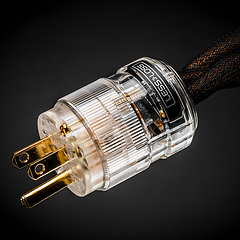 C-MARC™ Prime
The must have foundation for any sound system today.
From
$
486
C-MARC™ Prime
The must have foundation for any sound system today.
From
$
486
-
 C-MARC™ Classic
The unique super-cable power cord everyone's talking about.
From
$
1148
C-MARC™ Classic
The unique super-cable power cord everyone's talking about.
From
$
1148
-
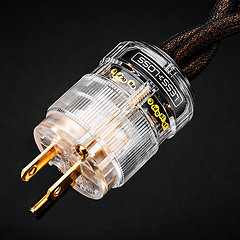 C-MARC™ Classic Entropic Process
The peerless, advanced Classic masterpiece.
From
$
1934
C-MARC™ Classic Entropic Process
The peerless, advanced Classic masterpiece.
From
$
1934
-
 C-MARC™ Stellar Entropic Process
The crown jewel for highest performance power connection.
From
$
2450
C-MARC™ Stellar Entropic Process
The crown jewel for highest performance power connection.
From
$
2450
-
- Loudspeaker Cables
- Interconnect Cables
-
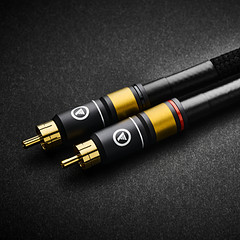 RCA C-MARC™
Cotton-clad true Litz • Whopping 2.3mm2 polarities
From
$
850
RCA C-MARC™
Cotton-clad true Litz • Whopping 2.3mm2 polarities
From
$
850
-
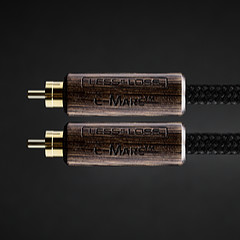 RCA C-MARC™ Entropic Process
Our finest RCA cable • Polished Wenge barrels
From
$
1428
RCA C-MARC™ Entropic Process
Our finest RCA cable • Polished Wenge barrels
From
$
1428
-
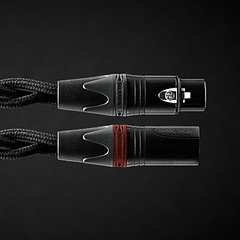 XLR C-MARC™
A hand-braided cotton-clad unique Litz construction
From
$
950
XLR C-MARC™
A hand-braided cotton-clad unique Litz construction
From
$
950
-
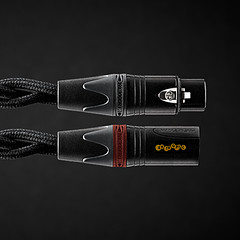 XLR C-MARC™ Entropic Process
Stratospheric performance for the audio connoisseur
From
$
1615
XLR C-MARC™ Entropic Process
Stratospheric performance for the audio connoisseur
From
$
1615
-
- Digital Cables
-
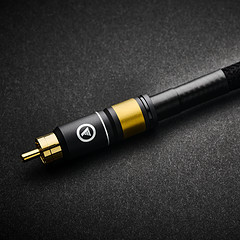 RCA Digital C-MARC™
Cotton-clad unique Litz design • Made only by LessLoss
From
$
510
RCA Digital C-MARC™
Cotton-clad unique Litz design • Made only by LessLoss
From
$
510
-
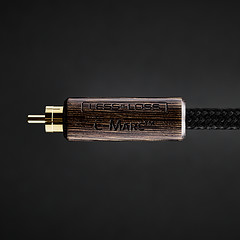 RCA Digital C-MARC™ Entropic Process
Possibly the most subtle digital cable on the planet
From
$
858
RCA Digital C-MARC™ Entropic Process
Possibly the most subtle digital cable on the planet
From
$
858
-
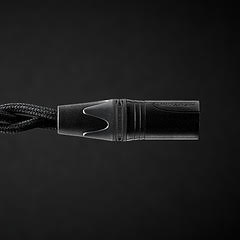 XLR Digital C-MARC™
Featuring a whopping 3 x 2.3mm2 Litz construction
From
$
570
XLR Digital C-MARC™
Featuring a whopping 3 x 2.3mm2 Litz construction
From
$
570
-
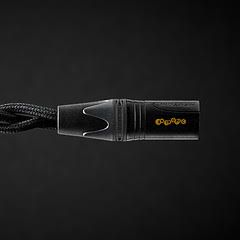 XLR Digital C-MARC™ Entropic Process
Stratospheric performance for the audio connoisseur
From
$
969
XLR Digital C-MARC™ Entropic Process
Stratospheric performance for the audio connoisseur
From
$
969
-
- Grounding Cables
- Bulk Wire and Cable
- Signal Conditioners
-
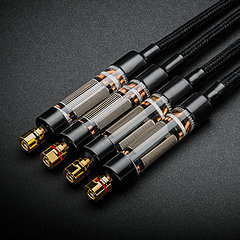 Firewall for Loudspeakers
Firewall for Loudspeakers
C-MARC™ Plug-and-Play Speaker signal conditioning like you've never imagined From $ 1656 -
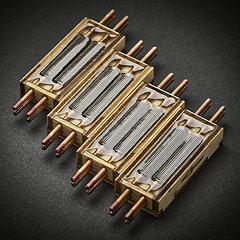 Firewall for Loudspeakers
Firewall for Loudspeakers
DIY version for Self-Installation For the Do-It-Yourself project enthusiast • Solder yourself From $ 800 -
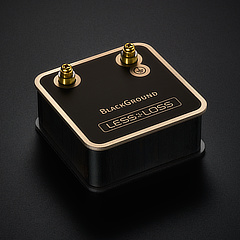 BlackGround DIY
Voltage-ground interface for a variety of applications
From
$
446
BlackGround DIY
Voltage-ground interface for a variety of applications
From
$
446
-
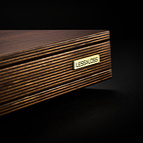 BlackGround 8x/10x Speaker Base
Plug-and-play loudspeaker signal conditioner
From
$
3096
BlackGround 8x/10x Speaker Base
Plug-and-play loudspeaker signal conditioner
From
$
3096
-
- Power Conditioners
-
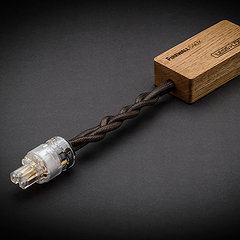 Firewall 640x
Plug-and-play solution for any powered gear
Firewall 640x
Plug-and-play solution for any powered gear
C-MARC™ Entropic Process and standard lead versions From $ 654 -
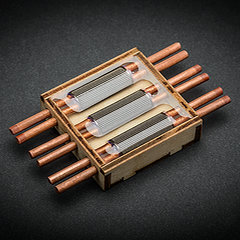 Firewall 640x DIY for Self-Installation
Self-solder and save!
From
$
320
Firewall 640x DIY for Self-Installation
Self-solder and save!
From
$
320
-
 BlackGround DIY
Voltage-ground interface for a variety of applications
From
$
446
BlackGround DIY
Voltage-ground interface for a variety of applications
From
$
446
-
 BlackGround 6x/10x Power Base
Plug-and-play power conditioner
From
$
2350
BlackGround 6x/10x Power Base
Plug-and-play power conditioner
From
$
2350
-
- Power Distributors
- Equipment Feet
- Field Conditioner
- DACs
- Power Cables
- Reviews
- This is definitely the cable to go for. It will almost literally blow your mind. – March 2012, Puresound Magazine
-
I was intrigued by the unanimously positive reviews garnered by these products ...
– by user Raymond Eye
Leaves you speechless
Sensational cables
BEST purchase I've made
Top notch performance
It's a steal
Musical... liquid... 3D
It's not subtle
More than an upgrade
Best I've heard so far
Stellar service
Sounds like a new system
Much more lifelike
Emotional flow
Overwhelming results
More dimensional
Sound is transformative
We were all astounded
Transformed my listening
Sounds so cohesive
Emotionally engaging
- Where to Start
- Free Newsletter
- Newsletter Archive
- B-Stock Alerts
- Shopping Tools
-
Shipping
- Free Shipping Learn about our international shipping policy
-
Return Options
Our satisfaction guarantee
and return policy -
Customs
UPS expedites local
customs clearance
-
Transaction
- Conditions of Sale Agreement for a smooth business transaction
- Privacy Policy We pledge to keep your information private
-
Terms of Use
Business policies
and agreements
-
Account
-
- Contact Us
-
Meet the Designers
-
- Care to share of your personal experience with our products? We'd be happy to post it!
- Want to learn more about our activities? Our Newsletter is both free and spam-free.
hi-res photos, brochures
logos, press releases, and
print-friendly PDF downloads. -
Contact Us
Connect with Us
-
